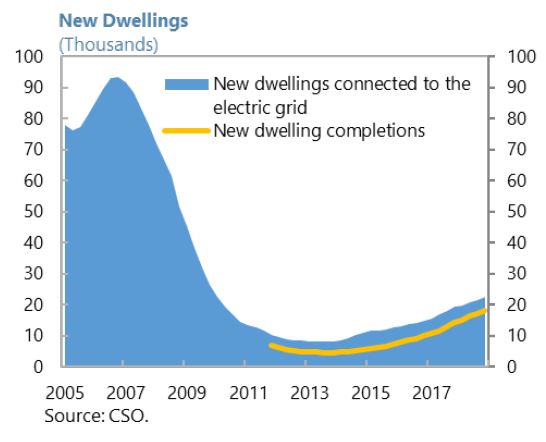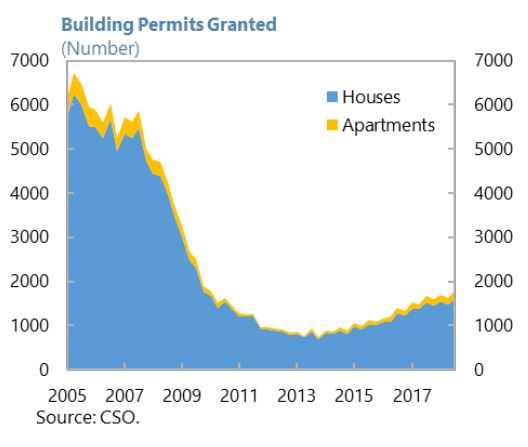Monday, June 17, 2019
Housing Market in Ireland
From the IMF’s latest report on Ireland:
“Unlike during the pre-crisis period, rising housing prices have not been fueled by excessive credit but rather by a lagging supply response to rising demand. Robust job creation, rising wages, low interest rates, and population growth have all contributed to a strong recovery in housing demand since 2013. The supply of housing, however, has not kept pace. The main factors that have prevented a faster expansion in housing supply are constraining regulations, weaknesses in the zoning and planning process, financial difficulties of construction firms, skills shortages in the construction sector, and land hoarding.
The government has taken several measures to increase housing supply, develop the rental market, and improve affordability.1 The Rebuilding Ireland Action Plan for Housing and Homelessness, announced in July 2016, seeks to double the annual level of residential construction to 25,000 homes by 2020, deliver an additional 50,000 social housing units in the period to 2021, and meet the housing needs of an additional 87,000 households through housing assistance schemes. Home Building Finance Ireland, a newly established state lender for financially constrained developers, aims to deliver up to 7,500 new homes over the next five years, financed by a €750 million investment from the Ireland Strategic Investment Fund. Other initiatives include an infrastructure fund designed to provide local public infrastructure to facilitate housing development, and a new fast-track planning process for large-scale housing developments.
There are indications that the housing supply will continue to expand. The number of new dwellings connected to the electric grid increased by 17 percent in 2018—the fifth consecutive year of growth, albeit from a low base—while new dwelling completions have also grown rapidly. Forward-looking indicators point to further growth. Building permits granted for the construction of houses and apartments increased by 8.5 percent year-on-year in 2018:Q3, and employment continues to increase in the construction sector.”
Posted by at 10:30 AM
Labels: Global Housing Watch
Subscribe to: Posts

